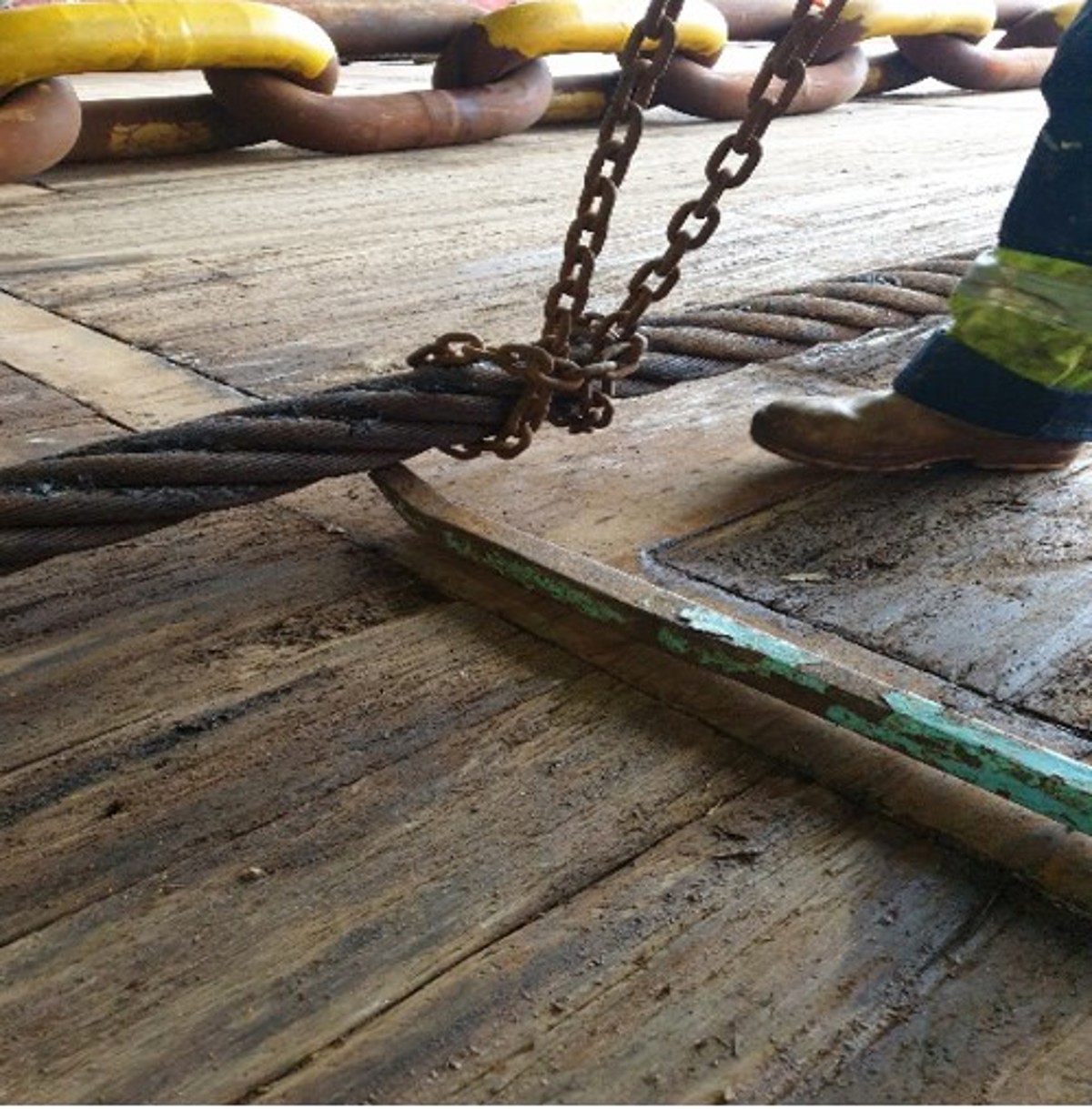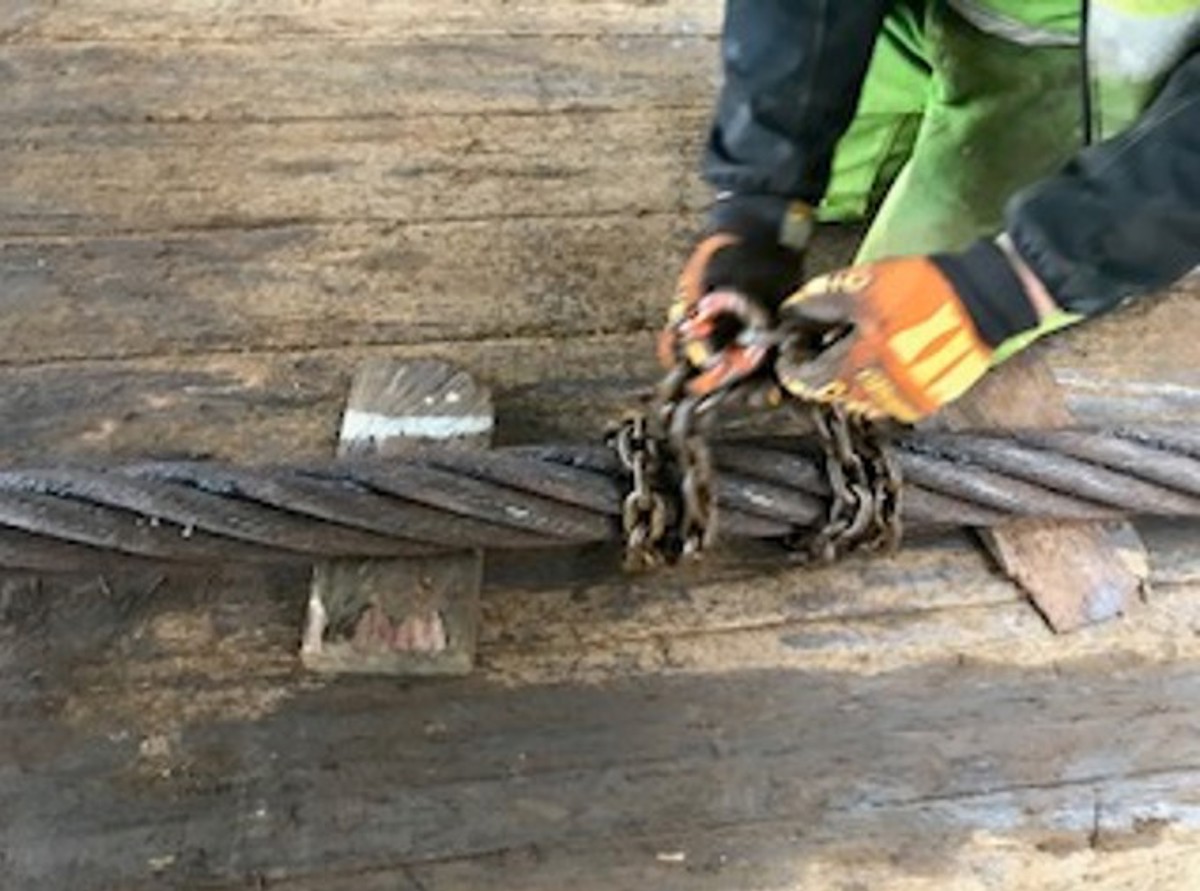Crushed finger injury during wire transfer operations
- Safety Flash
- Published on 9 October 2020
- Generated on 14 July 2025
- IMCA SF 29/20
- 3 minute read
Jump to:
What happened?
Able seamen were assisting with overboarding an ROV hook (connected to the lower drum tow wire) over the stern of the vessel until it could run freely on the winch. The socket and ROV hook were already over the stern but the wire needed assistance to run freely. The tow wire was dragged down the deck with the capstan by using a stopper chain double-choked around it. When the wire started running freely over the stern it was all stop on both the capstan and the winch (tow wire).
The crew then used a crowbar to try and free the stopper chain from the wire. This was done by inserting the crowbar underneath the wire to lift it up from the deck. One of the AB’s was removing the stopper chain whilst the crow bar held it up. Unfortunately, the crowbar was removed too early resulting in the wire falling to the deck whilst his hand was still underneath it. This resulted in a crush injury to the left index finger.
The job was immediately stopped and the injured person was taken into the vessel hospital to be assessed by the medical team offshore in communication with the onshore medical advisory service.
The vessel sailed into port for assessment of the finger injury at the hospital.
What were the causes?
Our members’ investigation revealed the following:
- The size of the chain stopper wrapped twice around the tow wire made access difficult for removal without placing a hand underneath the wire.
- The tow wire was heavy and difficult to move.
- There was no alternative means available to move the tow wire.
- Complacency – “task seen as routine”:
- It was not foreseen that the tow wire would move.
- This was a routine activity completed many times before.
- This method was viewed as “standard practice”.
- The risk assessment was not reviewed:
- It did not identify that there should be verification of ‘hands clear’ before the crowbar was removed.
- There was “normalisation” of the perception of risk of finger entrapment not identified.
- A failsafe for the tow wire slipping was not identified.
- Stop Work Authority was not discussed nor seen as part of dynamic risk assessment;
- There was poor situational awareness of the line of fire hazard.
Lessons learned
- Ensuring that where hazards for hand entrapment exist, a suitable assessment of the risk is completed and communicated to all parties involved.
- Re-emphasise the importance of ensuring that hand and fingers remain out of the line of fire.
Related Safety Flashes
-
IMCA SF 09/19
3 May 2019
-
-
IMCA SF 32/17
21 December 2017
-
-
IMCA SF 08/16
13 April 2016
IMCA Safety Flashes summarise key safety matters and incidents, allowing lessons to be more easily learnt for the benefit of the entire offshore industry.
The effectiveness of the IMCA Safety Flash system depends on the industry sharing information and so avoiding repeat incidents. Incidents are classified according to IOGP's Life Saving Rules.
All information is anonymised or sanitised, as appropriate, and warnings for graphic content included where possible.
IMCA makes every effort to ensure both the accuracy and reliability of the information shared, but is not be liable for any guidance and/or recommendation and/or statement herein contained.
The information contained in this document does not fulfil or replace any individual's or Member's legal, regulatory or other duties or obligations in respect of their operations. Individuals and Members remain solely responsible for the safe, lawful and proper conduct of their operations.
Share your safety incidents with IMCA online. Sign-up to receive Safety Flashes straight to your email.

